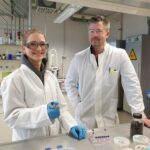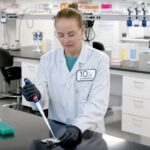The many stages of a bioprocess offer endless opportunities for optimization. Improving a process starts with process design (PD) and never really ends. In late 2024, Jun Luo, PhD, Genentech’s head of process engineering, upstream, and his colleagues, including one from Roche, wrote: “Recent accelerated development timelines are putting pressure and limitations on the extent of characterization during the PD stage, and, therefore, increasing the importance of a lifecycle approach to accumulate process and product knowledge during the post-approval stage of process validation.”
By applying advanced data analytics (ADA)—something that bioprocessors picked up from advertising, insurance, and other industries—it is possible “to gain additional process and product understanding, improved process control, and process performance,” Luo and his colleagues stated. The information unveiled with ADA can be used to improve an existing bioprocess and to bolster the design of experiments for future drug programs.
The effective use of ADA in bioprocessing, though, requires a multidisciplinary team, from a program lead and subject-matter experts to data scientists and information-technology specialists. Plus, advanced computational tools, such as ones based on machine learning, are used to analyze the data.
In an ADA case study, Luo’s team built a model around a bioprocess based on Chinese hamster ovary cells. Upstream alone, these scientists included 11 inputs, such as the concentration of the culture medium and the duration of culturing, and eight outputs, such as product titer and contaminants.
With a key objective of reducing the variability of the amount of product produced, the titer, Luo and his colleagues collected 800 gigabytes of data and tested more than 100 hypotheses for improving the output. The analysis suggested various ways to improve the bioprocess, and applying some of those changes reduced the variability of the titer by about six percent across more than 100 runs.
As Luo’s team concluded: “Establishing data pipelines and improved ADA skills holds promise for increasing hypothesis evaluation productivity, thereby bolstering institutional knowledge and problem-solving speed.”
Although this ADA-based example reveals the heavy lifting required to build a team that can collect and analyze gigantic amounts of data, the results provide a better understanding of the process and can reveal inputs that might be changed to improve outputs. Most important, a bioprocessor can use this knowledge to diagnose problems in an existing method and improve the production of tomorrow’s treatments.



